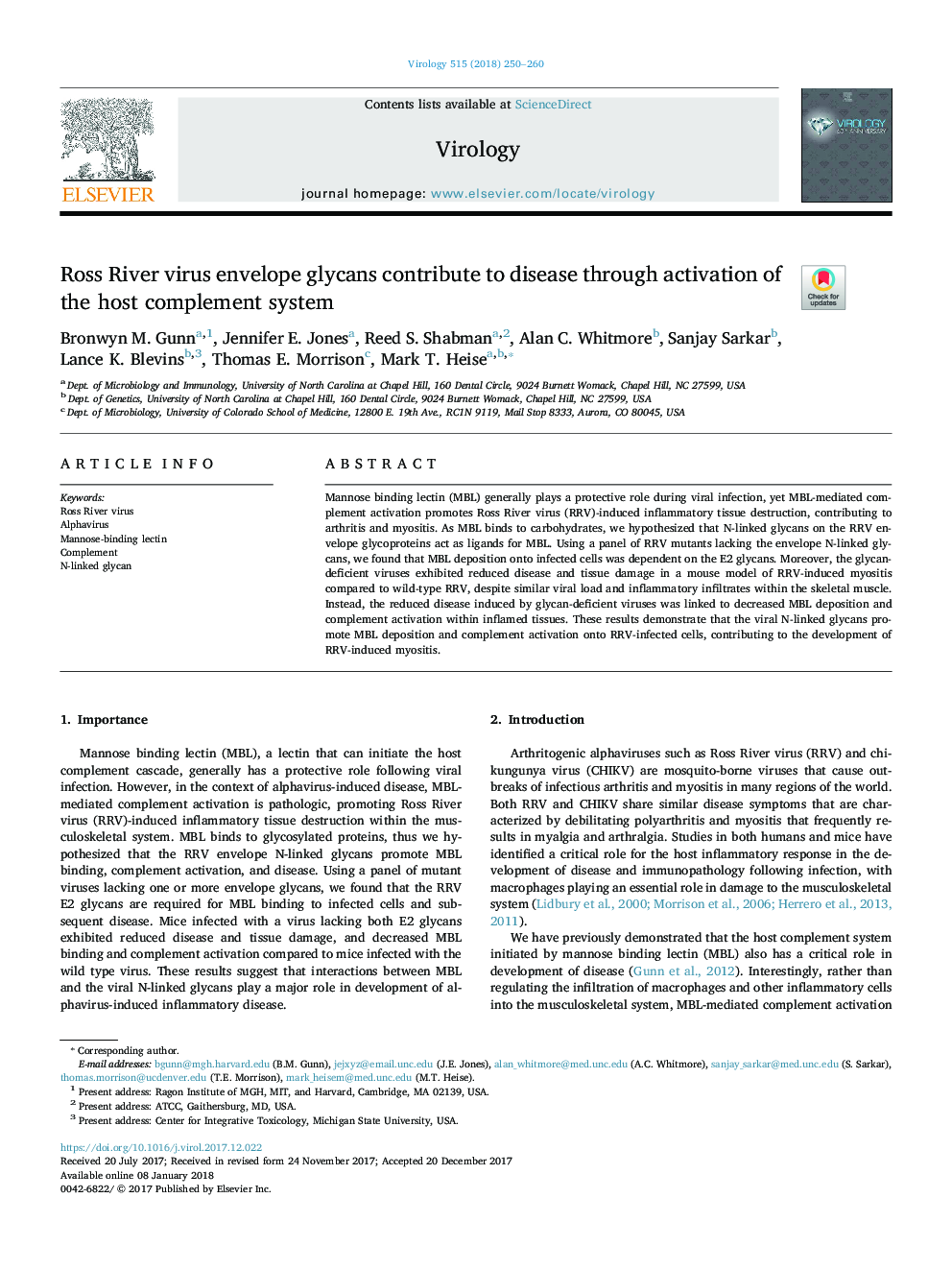| Article ID | Journal | Published Year | Pages | File Type |
|---|---|---|---|---|
| 8751565 | Virology | 2018 | 11 Pages |
Abstract
Mannose binding lectin (MBL) generally plays a protective role during viral infection, yet MBL-mediated complement activation promotes Ross River virus (RRV)-induced inflammatory tissue destruction, contributing to arthritis and myositis. As MBL binds to carbohydrates, we hypothesized that N-linked glycans on the RRV envelope glycoproteins act as ligands for MBL. Using a panel of RRV mutants lacking the envelope N-linked glycans, we found that MBL deposition onto infected cells was dependent on the E2 glycans. Moreover, the glycan-deficient viruses exhibited reduced disease and tissue damage in a mouse model of RRV-induced myositis compared to wild-type RRV, despite similar viral load and inflammatory infiltrates within the skeletal muscle. Instead, the reduced disease induced by glycan-deficient viruses was linked to decreased MBL deposition and complement activation within inflamed tissues. These results demonstrate that the viral N-linked glycans promote MBL deposition and complement activation onto RRV-infected cells, contributing to the development of RRV-induced myositis.
Related Topics
Life Sciences
Immunology and Microbiology
Virology
Authors
Bronwyn M. Gunn, Jennifer E. Jones, Reed S. Shabman, Alan C. Whitmore, Sanjay Sarkar, Lance K. Blevins, Thomas E. Morrison, Mark T. Heise,
